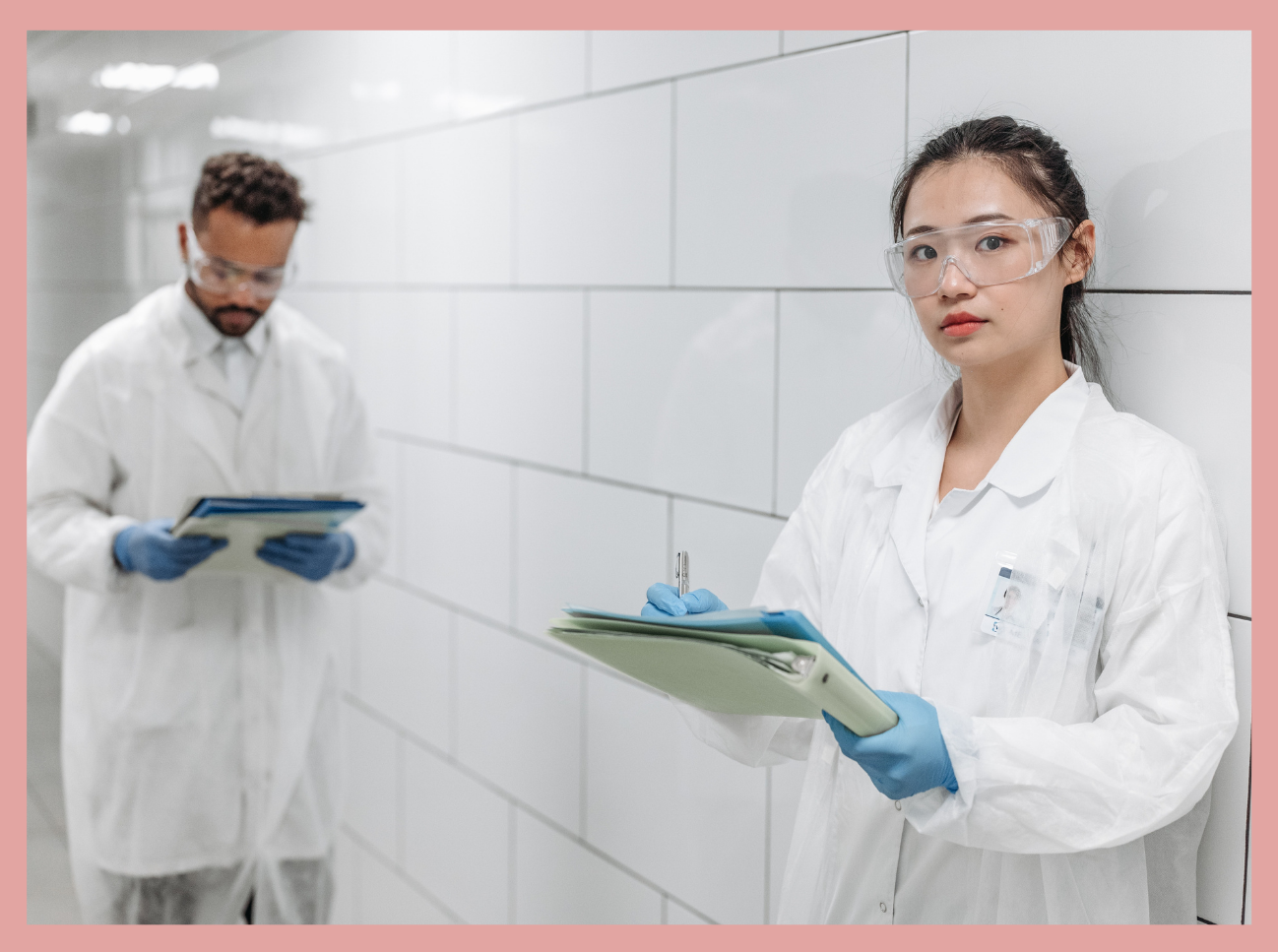


I don't know if you are a chemist (like me), a speech therapist (like Analice), a nutritionist, a physician, a biologist, a pharmacist, a nurse, a physiotherapist, a psychologist or a beautician. What do we have in common in our professional dress code We need to wear a lab coat! But why? After all, what is its function?
The lab coat has the function of PROTECTING our body from risks that could threaten our safety and health, that is why it is essential in the professions mentioned above. It should be worn closed over personal clothing and should NEVER be worn directly over the body. The lab coat is part of the personal protective equipment (PPE) according to NR6, from Ordinance No. 3.214, of the Ministry of Labor and Employment.

There are coats from several materials available on the market, such as oxford, gabardine, microfiber and cotton twill. You might be wondering, which one shall I invest in? Undoubtedly, choosing the ideal coat is directly related to appropriate protection for the type of activity we perform in each profession.
As far as I’m concerned, a person who is a chemist and works in a laboratory, the ideal coat is cotton with long sleeves, because the cotton burns slowly and reacts with acids and bases, avoiding or lessening the direct contact of these substances with the skin. Furthermore, cotton allows my skin to transpire and it is comfortable to touch.
As for Analice, who is a speech therapist and works in an office, she does not necessarily need a cotton coat, since she is not exposed to chemical agents.

Some synthetic fibers, such as polyamide (nylon), can generate static electricity by friction, especially in areas of low humidity. For this reason, they must never be used in areas where there is a fire hazard.
The idea of this post is to make us reflect upon the reasons why we wear lab coats in our professions and how the choice of this item is important for our protection according to the activity we perform. We hope this content will help you somehow.
XoXo, Su and Ana.
This text was adapted to its English version by Diogo Orlando.
Cover Image: Pavel Danilyuk - Pexels
References:
Fernandes, A.C.G.; Cardoso, C.; Araújo, L.; Bittencourt, T.A.A.; Pereira Neto, V.P.; Zanin, C.I.C.B.; Lima, A.A., Safety in the Chemistry Laboratory, UNIFIA, Gestão em Foco (Management in Focus), 150-162, 2015.
Val, A.M.G.; Nascentes, C.C.; Machado, J. C., Safety and Laboratory Techniques I, Licentiate Degree in Chemistry Modality: Distance Education, Department of Chemistry – ICEX, UFMG, 2008.
http://www.fiocruz.br/biosseguranca/ctbio/docs/jaleco2.pdf,accessed on 05/31/2021.
https://3uniformes.com.br/jaleco-branco/,accessed on 05/31/2021.
| Cookie | Duration | Description |
|---|---|---|
| cookielawinfo-checkbox-analytics | 11 months | This cookie is set by GDPR Cookie Consent plugin. The cookie is used to store the user consent for the cookies in the category "Analytics". |
| cookielawinfo-checkbox-functional | 11 months | The cookie is set by GDPR cookie consent to record the user consent for the cookies in the category "Functional". |
| cookielawinfo-checkbox-necessary | 11 months | This cookie is set by GDPR Cookie Consent plugin. The cookies is used to store the user consent for the cookies in the category "Necessary". |
| cookielawinfo-checkbox-others | 11 months | This cookie is set by GDPR Cookie Consent plugin. The cookie is used to store the user consent for the cookies in the category "Other. |
| cookielawinfo-checkbox-performance | 11 months | This cookie is set by GDPR Cookie Consent plugin. The cookie is used to store the user consent for the cookies in the category "Performance". |
| viewed_cookie_policy | 11 months | The cookie is set by the GDPR Cookie Consent plugin and is used to store whether or not user has consented to the use of cookies. It does not store any personal data. |


Ana
Parabéns! Adorei o tema que você abordou! Ansiosa para o próximo tema😃😉
Analice Tozetti
Kelly, fico muito feliz que tenha gostado e aguarda o próximo texto!! Em breve teremos assuntos interessantíssimos:)